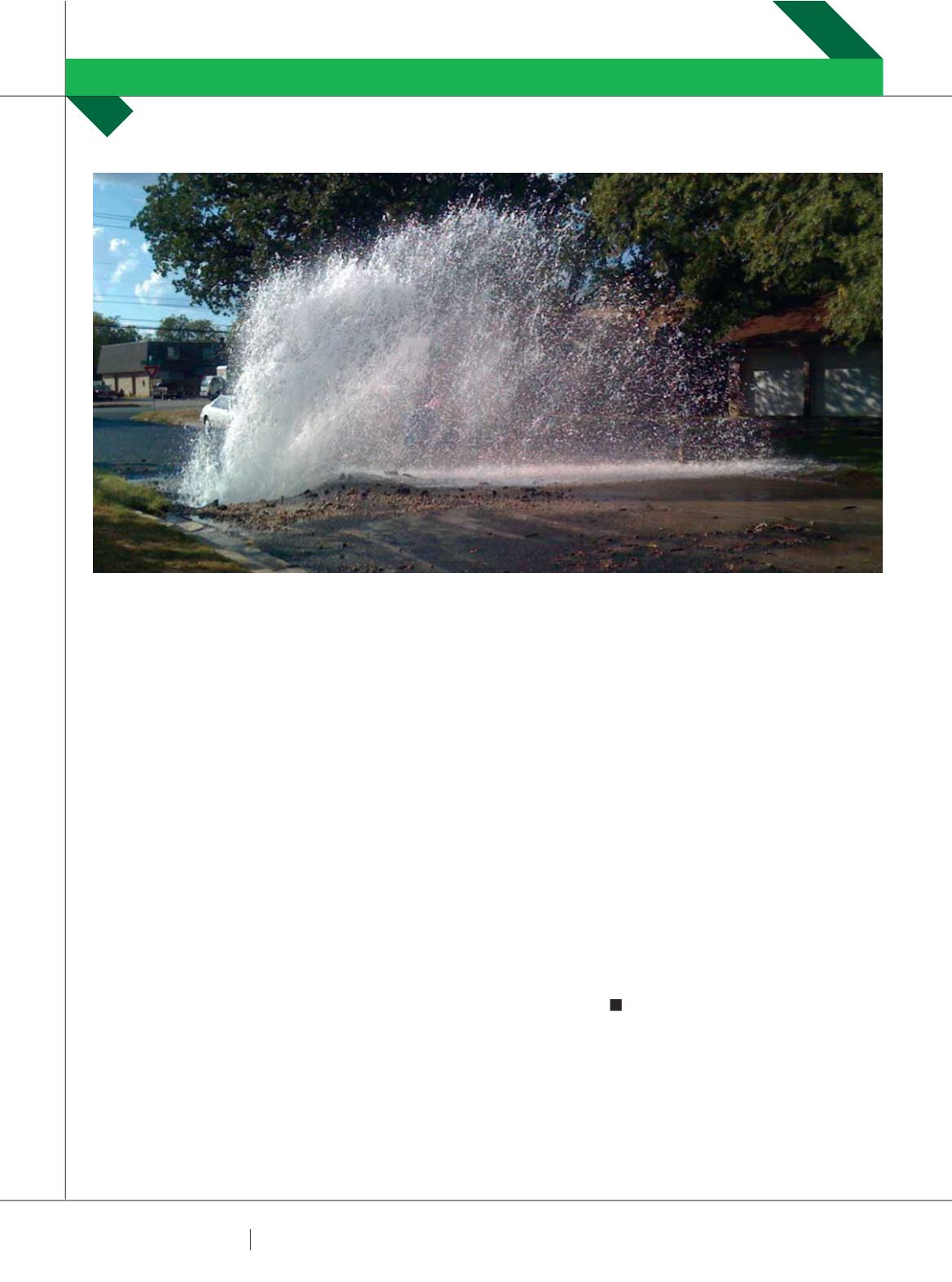

74
PLUMBING CONNECTION
SPRING 2015
We can surmise that at the end of the average 10 year life of
a water meter, potentially 80% of the residential network no
longer has effective backflow protection.
This research has led to the mandatory replacement of
the dual check valve components being changed out every
year in some regions in the USA. Costly yes, but what is the
potential cost of an incident whereby the public drinking
water cannot be used, which results in lack of public
confidence in the drinking water?
Once we ’fix’ residential connections, let’s draw our
attention to commercial and industrial connections. We
see an almost universal approach across Australia where
the connection is assessed based on the degree of hazard
the process within the property presents and a boundary
containment device is stipulated to be installed and tested
by the water supplier. The installing plumber is expected to
have the device tested to confirm effective operation and
the device is registered with the local council against that
property.
From this point the management of the ongoing annual
testing of the device varies greatly across the country.
Some water suppliers maintain the register of devices and
send reminders to the property owners when the next test
is due, while others register the devices and then take no
further action. The onus then falls on the property owner to
remember to have the device tested annually – and if they
don’t the device may remain untested for years. I guess the
thinking here is that if there is a backflow event and the
device fails and allows contaminants back into the public
water supply, the liability is placed onto the property owner
because they have a duty of care and a responsibility to
maintain the device in a serviceable condition.
It could be argued that, due to the property owner’s lack
of expert knowledge in water supply and the ignorance
to the chance of a backflow incident occurring, it is the
responsibility of the water supplier to manage the annual
testing and ensure the property owner complies.
We are lucky in this country to have such a good water
supply but as further reduction of services and budgets
impact the operations of the water suppliers, we increase
the risk of one day seeing a news report where people were
poisoned or fatalities have occurred due to an unprotected
cross connection allowing contaminants back into the water
supply.
Human life relies on a safe water supply and only by fully
understanding cross connection control and ensuring it is
managed closely can we have confidence that the water
is safe to drink. After all safe drinking water is a basic
necessity of life.
Peter McLennan has been involved with Backflow
Prevention in Australia since the late 1980s. He is the
President of the Backflow Prevention Association of Australia
Inc., and Treasurer of the Backflow Prevention Association
of Australia Inc. Queensland Chapter. Visit
www.bpaa.org.au to find out more about how the Backflow Prevention
Association of Australia Inc. can help you understand Cross
Connection Control and Backflow Prevention.
BACKFLOW PREVENTION
PETER MCLENNAN
There are approximately two water main breaks every hour in Australia.
















